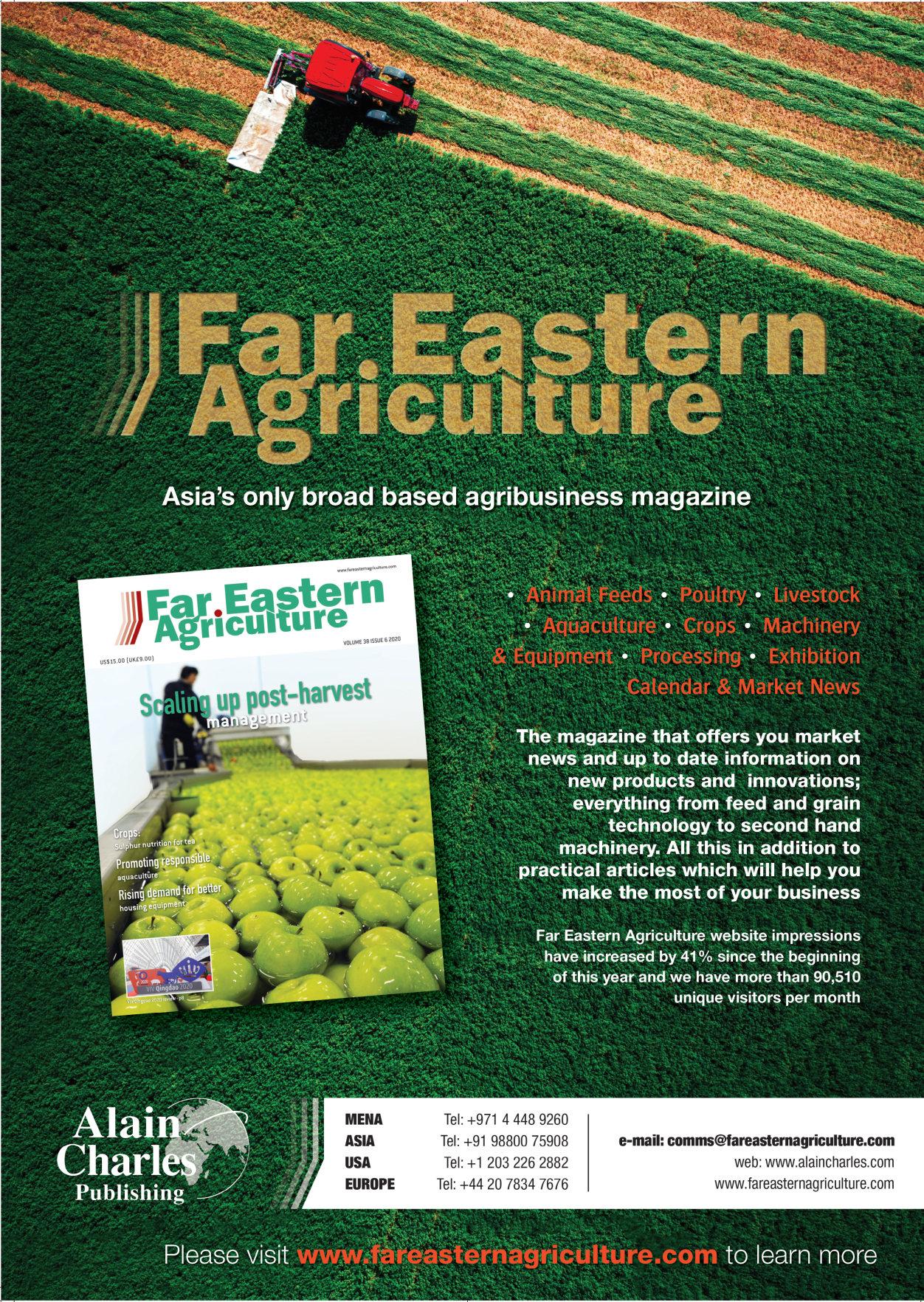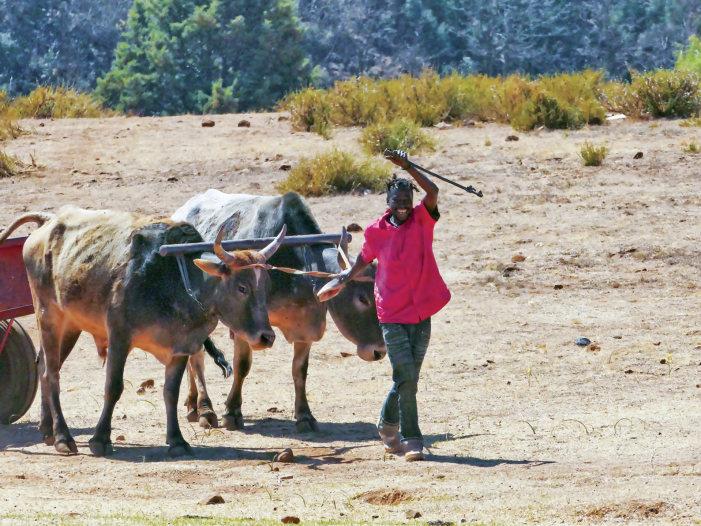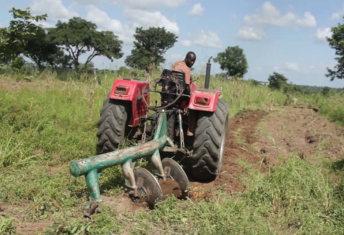
16 minute read
Crops
Africa is a major market for Spanish manufacturers of agricultural products and equipment. Jaime Hernani, director of AGRAGEX, discusses the work of these companies and their interest in the continent.
Combining innovation and quality
AGRAGEX has organised visits of buyers from African countries to Spain.
AGRAGEX, THE SPANISH Exporters' Association of the agricultural sector, is dedicated to promoting the products and equipment of Spanish agricultural manufacturers throughout international markets, for more than 41 years.
In Africa
Africa is a priority market for AGRAGEX, due to the diversity in crop and livestock, its demographical potential and proximity of the Maghreb region.
The organisation has expanded the scope of its activities in Africa, over the years, keen to be a part of the development of its agricultural sector in shaping the future of the continent.
AGRAGEX has held international exhibitions and trade missions to Morocco, Algeria, Tunisia, Libya an Egypt in the north, South Africa, Angola, Namibia and Zimbabwe in the south, Senegal, Côte d’Ivoire, Ghana, Nigeria an Cameroon on the west coast as well as Ethiopia, Kenya, Sudan and Zambia
AGRAGEX has held international exhibitions and trade missions across all parts of the continent. The association has organised visits of trade delegations, importers and distributors, from African countries to Spain.
on the east of the continent.
The association has organised visits of trade delegations, importers and distributors, from the African countries, coinciding with the FIMA trade fair in Zaragoza, to provide buyers the opportunity to learn and observe the Spanish agricultural and livestock equipment.
Industries
The leading technology of Spain is recognised world-wide for the design and manufacturing of plastic greenhouses and allied industries. Spanish companies in this sector are established across Africa.
The drip irrigation, sprinklers and pivot irrigation systems from Spain are wellknown around the world and USA, Japan and Germany are enthusiastic users.
For the storage of cereal crops, Spain has developed metallic silos and other products that help in preservation and prevent crop losses. Spain is an important manufacturer of turnkey farm projects that guarantee good practices and products of great quality.
The animal health and nutrition products from Spain, also stand out for adherence to high standards, helping in the prevention of animal diseases and ensuring an uninterrupted food supply.
The agricultural machinery, irrigation equipment, greenhouses, silos, agronutrients and biostimulants, as well as animal health and nutrition products from Spain combine innovative technology with affordable prices. They meet high quality standards and offer an unbeatable price-quality relationship. h
Nestlé steps up efforts to boost Africa’s coffee production
AFRICA ACCOUNTS FOR around 12% of the world’s coffee production and the high-quality and taste of coffee from the continent are loved by coffee connoisseurs worldwide. Côte d’Ivoire alone is the largest coffee producer in West Africa and the third largest in sub-Saharan Africa.
Coffee farmer, Francois Dadi Serikpa, from Gnamagnoa in Côte d’Ivoire, joined Nestlé’s Nescafé Plan10 years ago. The coffee farms that had been in his family for generations were producing poor yields, making it hard for him to earn a good living to care for his family. Under the Plan, he worked hard with Nestlé agronomists who taught him better farming practices and how to grow coffee sustainably. Four years later, Dadi was very proud to have increased his production five-fold, growing more than two tons per hectare. Dadi embodies the success stories of thousands of farmers across 11 countries, who are part of the Nescafé Plan worldwide.
However, scientists warn that without conservation, monitoring and seed preservation measures, millions of coffee farmers on the continent could lose their livelihoods, impacting the quality of their lives and their families.
Dadi is one of the millions of farmers all around the world facing the threat of climate change disrupting coffee production. To grow properly, coffee crops require specific temperature, light and humidity levels.
“However, rising temperatures will reduce the area suitable for growing coffee by up to 50% by 2050. Water shortages have also left some coffee farms abandoned or converted for other uses. In Côte d’Ivoire, coffee production usually peaks at about 100,000 metric tonnes a year, but recently took a severe hit when the seasonable rain pattern reduced supply by 15%,” said the statement of Nestlé.
To help revitalise coffee production on the continent, much work is currently underway to boost production, which can improve the incomes of coffee farmers and encourage young people to pursue a career in coffee farming.
Côte d’Ivoire is the largest coffee producer in West Africa.
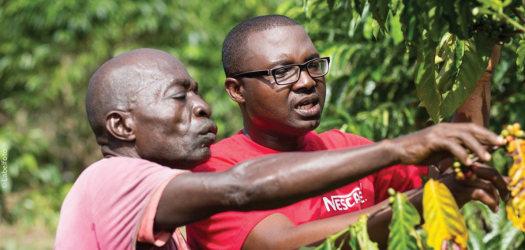
For Nestlé in Central and West Africa, sustainable coffee farming is attainable, and the company is joining forces to do this by rejuvenating, rehabilitating and replanting sustainable coffee now, and in the future.
Agricultural techniques, such as adapting the coffee tree crop formation including the structure, number of branches and canopy shapes, have been introduced to enhance growth. Group training, individual farmer coaching and farming tools have also been provided to Ivorian coffee farmers to encourage the advantages of the correct pruning and maintenance of plantlets and trees.
As a result, about 6,750 ha of coffee trees have been planted and more than 2,000 ha of coffee farms have been rejuvenated across Côte d’Ivoire, producing more than 2,000 metric tonnes of additional coffee supply and increasing farmer income by 25%.
In the Democratic Republic of Congo, Nespresso also recently announced a long-term commitment to revive the country’s coffee industry, support Congolese farmers and restore production in regions that are under threat.
South African stone fruit 2020/21 season expects improvements on all fronts
PROMOTIONAL ACTIVITY FOR the South African stone fruit industry in the UK is underway, and growers are optimistic about the season ahead.
The 2019/20 season brought many challenges caused by difficult weather conditions and the coronavirus pandemic. This season, however, is set to see an improvement in all aspects: this year’s weather has been advantageous for the fruit crops, and ports have returned to a more normal operational status.
Hortgro, the organisation which represents South Africa’s stone fruit industries, will continue to develop the plum, peach and nectarine categories in the UK through their integrated marketing initiative, which has now been running for 12 years.
Jacques du Preez, general manager of trade and markets at Hortgro, said, “The stone fruit forecast and overall estimate volumes are looking much better compared to the same time last year. For plums in particular, the favourable weather conditions have definitely had a positive impact on fruit set for this coming season and we are optimistic about the harvest.”
The initial export crop estimates project an
Favourable weather conditions have a positive impact on the fruit crops.
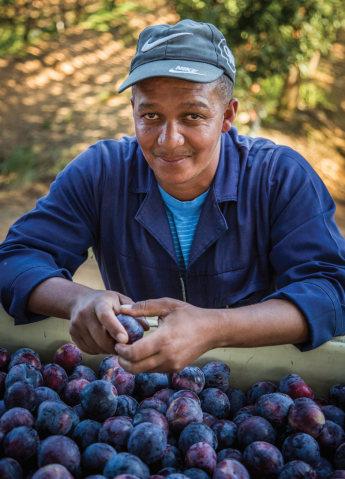
Image Credit: South African Stone Fruit
increase in volumes compared to the previous season. Plum growers anticipate a large increase of 22% compared to last season, to 10.8 million cartons. Nectarines are expected to increase from last year’s 5 million cartons to almost 5.6 million cartons (2.5kg). Peaches can expect a 5% increase to 2.1 million cartons. The increased volumes are mainly driven by young orchards coming into production and more favourable weather conditions.
Collaboration with retailers will be one of the main focuses of this year’s campaign, which will see in-store promotions, advertising and editorial both online and in retailer magazines, alongside social media activity.
The stone fruit campaign will be supported by other trade and consumer-focused activities, including new recipe styling and photography, editorial and advertising, and social media.
Preez added, “The South African stone fruit growers, packers and exporters remain committed to supplying consumers with excellent quality and great tasting products. The industry is confident that the logistical challenges experienced during the past year due to COVID-19 is something of the past and is looking forward to a great season.”
The season begins with stone fruit in November through to May and top fruit from April through to October.
Dr Terry Mabbett explains the system that can help African rice farmers ensure complete nutrients for the crop.
Feeding rice through the foliage
Omex Bio 20 is applied in the rice nursery to boost root biomass and to secure seedling establishment.
Image Credit: Omex
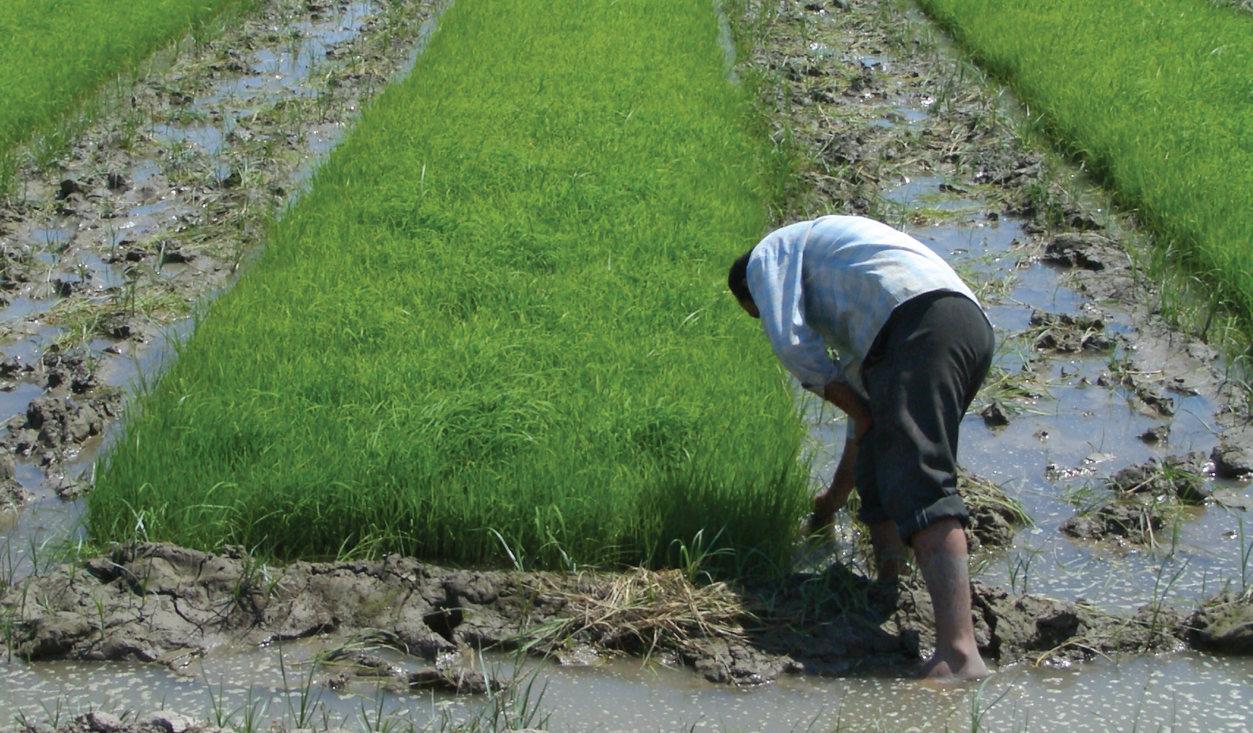
LOWLAND RICE FARMING may only realise half the achievable grain yield even when modern hybrid varieties are used. Climatic conditions and the extent to which these vary from year to year may restrict yield but are clearly beyond control of the rice farming fraternity.
However, fertilisation is well within the remit and control of rice farmers. For instance, placement of potassium (K) fertiliser can be expected to increase rice grain yield by 20%. However, fertiliser failings and impact on yield potential may not be due to insufficient fertiliser but inefficient use and application of available resources.
For example, efficiency of nitrogen (N) fertiliser can be maximised by improved application timing and synchronisation with those stages in the rice crop cycle having the highest requirement for this macronutrient, as well as due regard to placement in the soil. Similarly, phosphorous (P) must be targeted at key stages in the crop growth and development cycle.
The answer and solution lies in foliar feeding whereby nutrients are supplied in a ready-plant-available form as soluble-liquid or soluble-powder delivery systems, mixed with appropriate volumes of water and sprayed onto the crop foliage. Foliar
Foliar feeding complements base fertilisation to offer dual advantages of speed to improve timing in relation to nutrient-demanding stages in the rice crop cycle and exact placement to maximise uptake and minimise loss and waste.
feeding is not a substitute or replacement for base fertilisation using solid formulations but complementary to offer dual advantages of speed to improve timing in relation to nutrient-demanding stages in the rice crop cycle and exact placement to maximise uptake and minimise loss and waste. Separate but of crucial importance is foliar feeding as the fastest way to correct plant and crop deficiency of a specific nutrient.
Foliar feeding is of particular importance and benefit where soil nutrients such as zinc are not available in the plant because they are locked up, in this case as insoluble zinc phosphate and prevalent in high P soils. Or insufficiently plant available, such as calcium (Ca) due to inherent poor mobility of this divalent cation (Ca2+) but nevertheless an essential secondary (meso) nutrient.
From leaf surface to cytoplasm
Journey from leaf surface to cell cytoplasm
for soluble nutrients applied by foliar feeding, is quicker and altogether less encumbered than more tortuous journeys for nutrients from soil into the rice plant’s root system. Soluble nutrients in the spray tank are in a stable solution, unthreatened by an inappropriate pH background or counteractive compounds as is frequently so for soil-based nutrients.
The foliar feeding journey is divided into two distinct and separate stages: ● Movement of nutrients from foliar surface into the leaf tissue via penetration or absorption ● Movement of nutrients from point of penetration to various sites in the plant by translocation ● Two main points of entry are direct entry via the cuticle and entry via the stomata Extent and speed of entry via stomata will clearly depend on stomatal density and distribution across the leaf surface and the extent to which stomatal pores are open, depending on the time of day and atmospheric conditions including relative humidity. All that said, the journey for soluble nutrients applied by foliar feeding is more rapid and less obstructive than for nutrients making their way from the soil solution, into the roots and up into the aerial parts of the plant.
Soluble nutrients - what’s in the Omex store for rice farming?
Farmers will realise the benefits of foliar feeding through soluble nutrient products that can satisfy all nutrient requirements.
Omex Agrifluids is a R&D based company in the East Anglian region of England, with a product profile which spans the spectrum of essential plant nutrients and is used worldwide on the widest range of crops including rice. Dr Ben Odunlami, technical sales manager for Africa and managing director, Peter Prentis explained in detail about the Omex products for rice in Africa.
Zinc seed dressing – the means to an end
“First on the agenda is a Primer Zinc Bio applied as a seed dressing (3 ml product/kg rice seed). Clearly applied at the very beginning of the crop cycle, but ironically to ensure the rice harvest it should contain sufficient zinc to ensure the nutrition quality of the rice grain,” said Odunlami. “Primer Zn Bio is a high concentration suspension seed treatment containing 700 g/l (70% w/v) Zn and a natural biostimulant sourced from a marine alga (seaweed), “ said Prentis.
Stimulating seedling growth
Omex Bio 20 is another product in which key nutrients are boosted by the addition of a biostimulant. “Omex Bio 20 is specially formulated to supply rice seedlings with a nutrient profile that promotes greater root biomass to maximise utilisation of moisture and nutrients and therefore plant growth,” added Prentis.
Post-transplant sprays at tillering
Transplanted rice plants at the tillering stage receive a second ‘shot’ of Omex Bio 20 (1.0 – 2.0 l/ha) and a second boost with zinc this time as Kingfol Zn, a flowable foliar applied nutrient formulation, containing 700 g/l (70% w/v). Odunlami told African farming, “How the zinc contained in Kingfol Zn is zinc oxide, which has small particles together with enhancers to optimise the uptake by the leaves.”
Post-transplant sprays at panicle initiation and spike emergence
Key priorities at the crucial panicle initiation and spike emergence stages are broad and balanced applications of nutrients to sustain growth and development. These are specific applications of calcium and boron treatments for general all round tissue strength and resilience.
Odunlami says the breadth and balance is provided by combinations of four Omex products – Omex K41 at 3.0 l/ha, a water soluble emulsion containing nitrogen, magnesium, sulphur with super high potassium (41% w/v); calcium and boron are supplied by Omex CalmaxB (calcium 22.50% w/v, boron 1.53% w/v plus chelated micronutrients, nitrogen and magnesium) at 2.0 l/ha, Omex Bio 20 and Omex Kingfol Zn. h
Use of Omex’s high zinc products ensures the enhanced human nutrition required of the harvested grain.
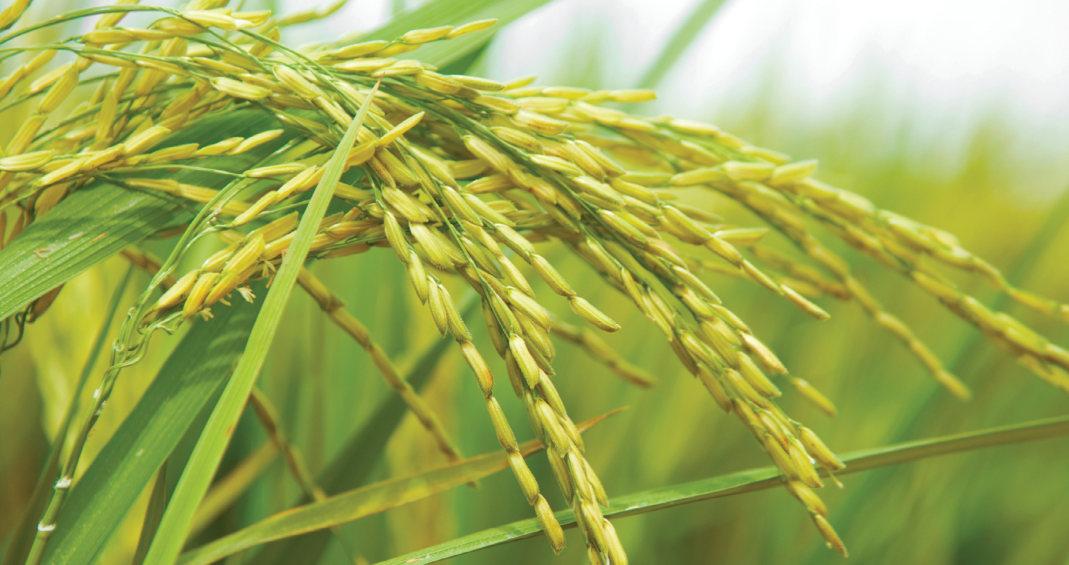
Farmers in Ethiopia are finding new ways of improving crop yields. Wallace Mawire reports.
Improving wheat productivity
DNA fingerprinting study has shown that farmers in Ethiopia have widely adopted improved rust-resistant bread wheat varieties.
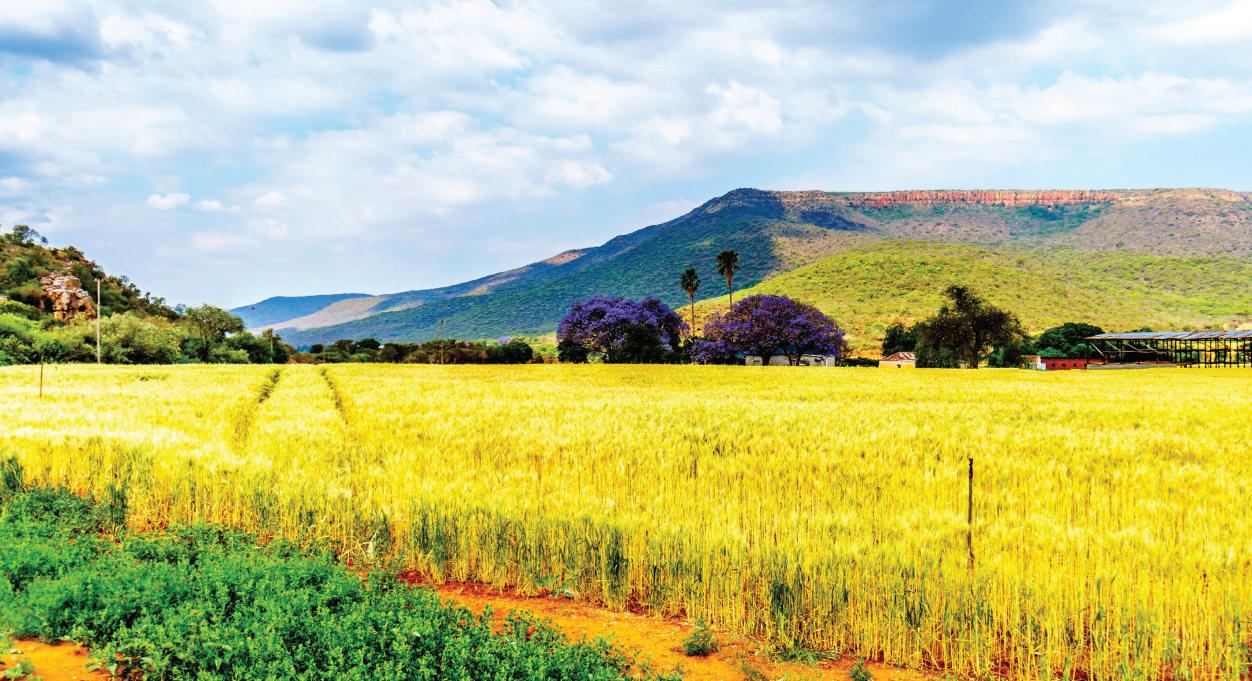
WHEAT RUST IS a devastating fungal disease that can be dispersed by wind over long distances and can dramatically reduce wheat yields. Ethiopia has developed ways to improve production.
Early warning system
An early warning system is helping farmers throughout Ethiopia combat wheat rusts by delivering wheat rust predictions directly to farmer’s phones. According to information received from the International Maize and Wheat Improvement Center (CIMMYT), the system, which uses field and mobile phone surveillance data together with spore dispersal and environmental suitability forecasts, allows policy makers to forecast a wheat rust outbreak up to a week in advance.
According to Dave Hodson, principal scientist at the CIMMYT based in Mexico, despite the challenges created by COVID19 pandemic in 2020 and efforts of their partners, it was still possible to operate the wheat rust early warning system and get regular advisories and alerts out to extension agents and farmers.
Hodson said that wheat rust, especially yellow and stem rust, were highly prevalent in Ethiopia this season and weather conditions were extremely favourable for rust development. "However, based on expert opinion and feedback, farmers were able to get control of rust outbreaks in many areas. Rust diseases were widespread, but high losses over large areas should not have occurred," he said.
It is reported that several factors are likely to be contributing to the control, including information from the early warning system, widespread use of different resistant
The early warning system allows policy makers to forecast a wheat rust outbreak up to a week in advance.
varieties, better preparedness and experience in rust control from farmers.
DNA fingerprinting
A CIMMYT-led, state-of-the-art DNA fingerprinting study has shown that farmers in Ethiopia have widely adopted improved rust-resistant bread wheat varieties, increasing both farmer income and national wheat production.
The results published in Nature Scientific Reports, found that nearly 47% of the nationally representative area sampled was grown to varieties 10-years-old or younger and the majority, 61% of these were released after 2005. CIMMYT-derived varieties released by the Ethiopian Institute of Agricultural Research covered 87% of the wheat area surveyed.
It is reported that initial estimates indicate that the use of varieties released after 2005 allowed farmers to gain an additional 225,500 tonnes of extra production, valued at US$50mn, since 2014. h
Uralchem and Uralkali provide farmers with a complete range of fertilisers, essential for plant growth.
Apart from fertilisers, UFCL focuses on providing value-added services.


Ensuring crop nutrition
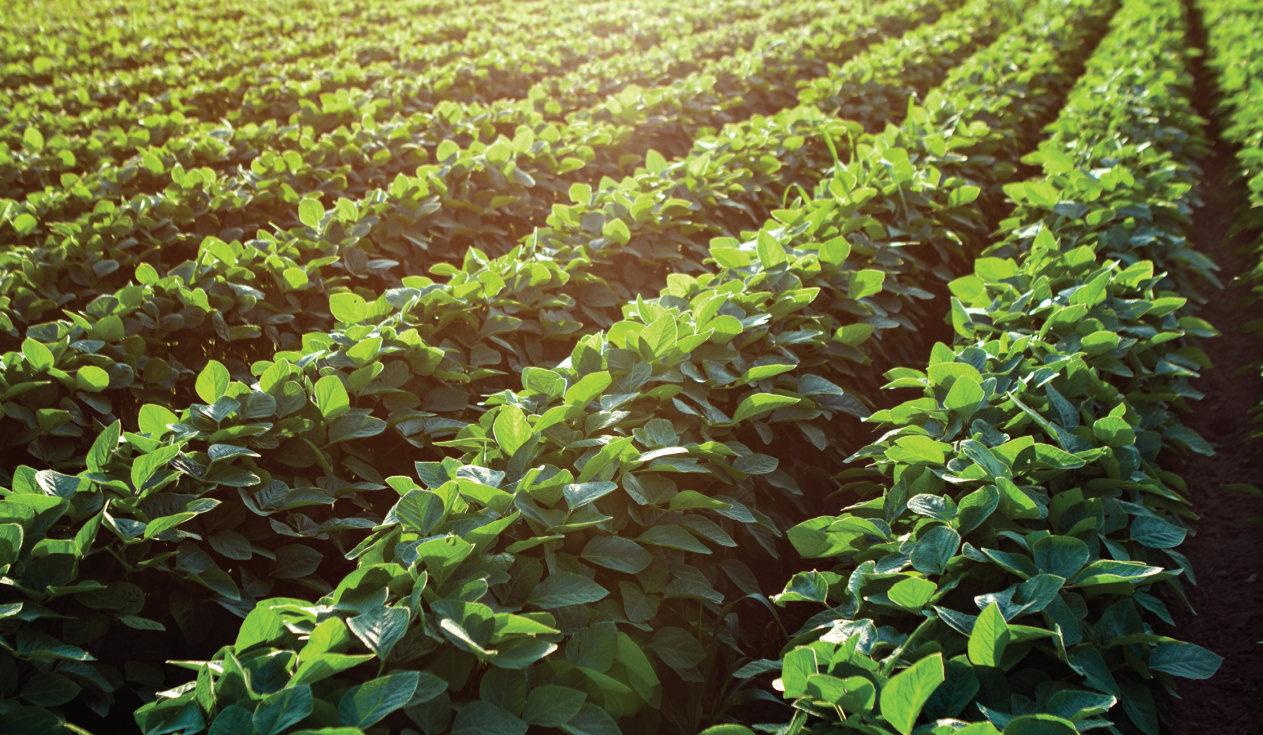
THE SUPPLY OF fertilisers in the right quantity and quality at the right time and place goes a long way in increasing farmers’ productivity, enhancing household incomes and in building food security.
Uralchem, a producer of mineral fertilisers, has a wide range of products used in plant cultivation and animal husbandry, including nitrogenous fertilisers commonly used in agriculture, such as ammonium nitrate, urea prilled, calcium ammonium nitrate granulated. In addition, Uralchem manufactures a number of NPK compounds and specialty water soluble fertilisers used in chemical industry, metallurgy, construction, mining, glass manufacturing and other industries.
Uralkali is the leading global producer of potash (potassium chloride) or MOP, accounting for about 20% of global potash production. The company mines potash ore, which is then enriched and converted into final product ready to be used as a fertiliser for direct application to the soil, a component for NPK blending and the source of potassium in the compound NPK manufacturing process.
Uralchem and Uralkali’s manufacturing facilities are located in Russia.
In Africa
UFCL was established in early 2019 to perform commercial and marketing activities in Africa on behalf of Uralchem and Uralkali. Proximity of offices to major African markets locates UFCL within arm’s reach to its customers and to those enterprises willing to engage into new business relationships.
Apart from fertilisers, UFCL focuses on providing value-added services and building practical knowledge of environmentallyfriendly crop production and the economical benefits, as well as test alternative fertilisation programmes. The company’s experts, alongside its customers (importers and distributors) establish field trials to demonstrate the effect of balanced crop nutrition to frontliners and major stakeholders of the agricultural sector: farmers.
Crop nutrients
Together with partners, UFCL distributes compound NPK grades, produced through a latest granulation manufacturing route, which ensures that each granule possesses superb physical properties (strength, density and shape) and contains primary nutrients (N, P and K) and sulphur. In nitrogenous fertilisers, UFCL supplies commonly used prilled urea, ammonium nitrate and CAN granular.
Potassium chloride (MOP) is universal, as it also can be applied directly to the field, which is very important in order to achieve balanced supply of nutrients for high quality yields. MOP is also distributed by UFCL.
The specialty fertilisers portfolio provides robust solutions for crops under irrigation. High purity and fully water soluble potassium nitrate, monoammonium phosphate, calcium nitrate concentrated, urea micro prills and foliar NPK+ME are specifically made for high-tech sensitive systems. h
